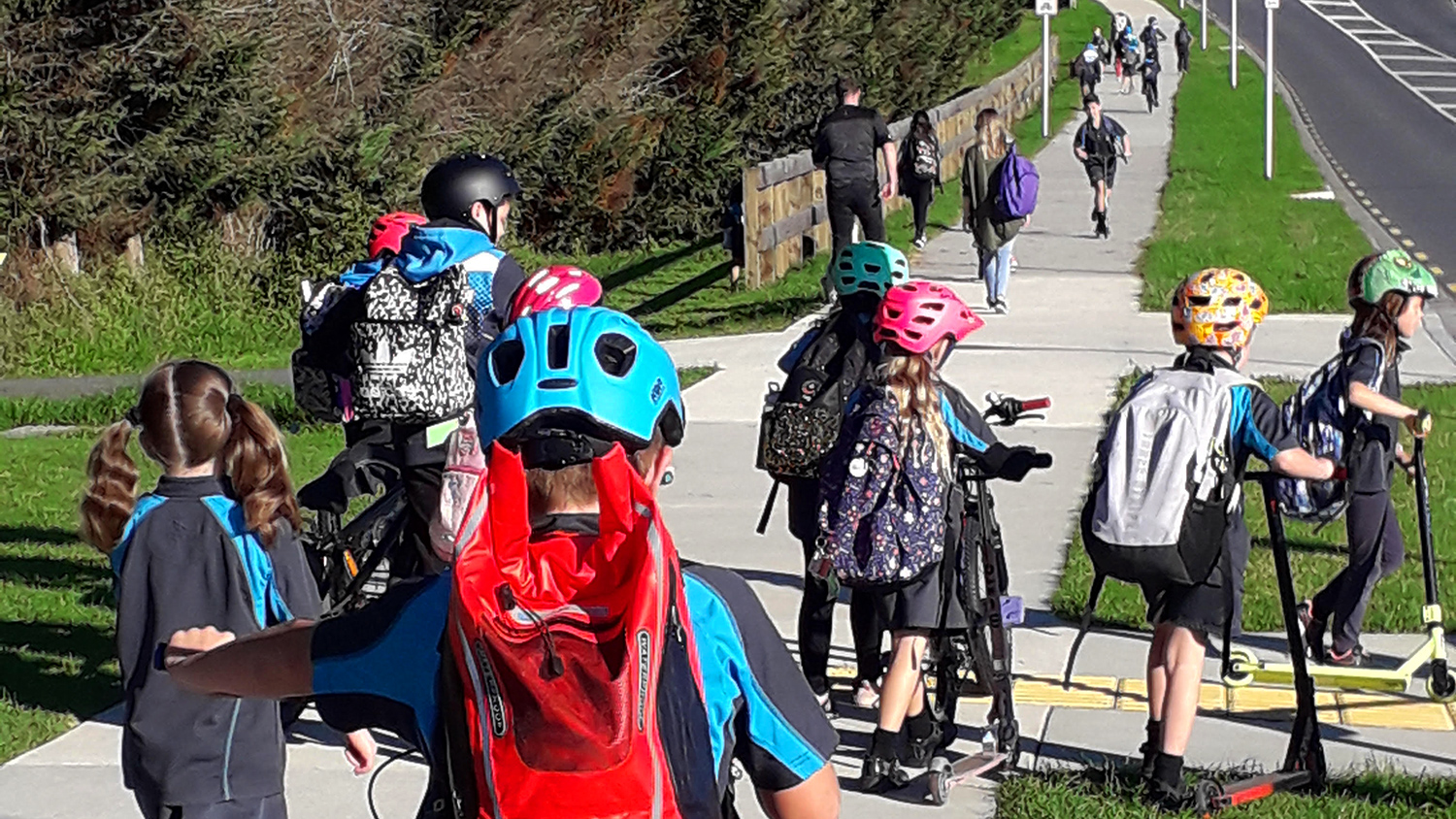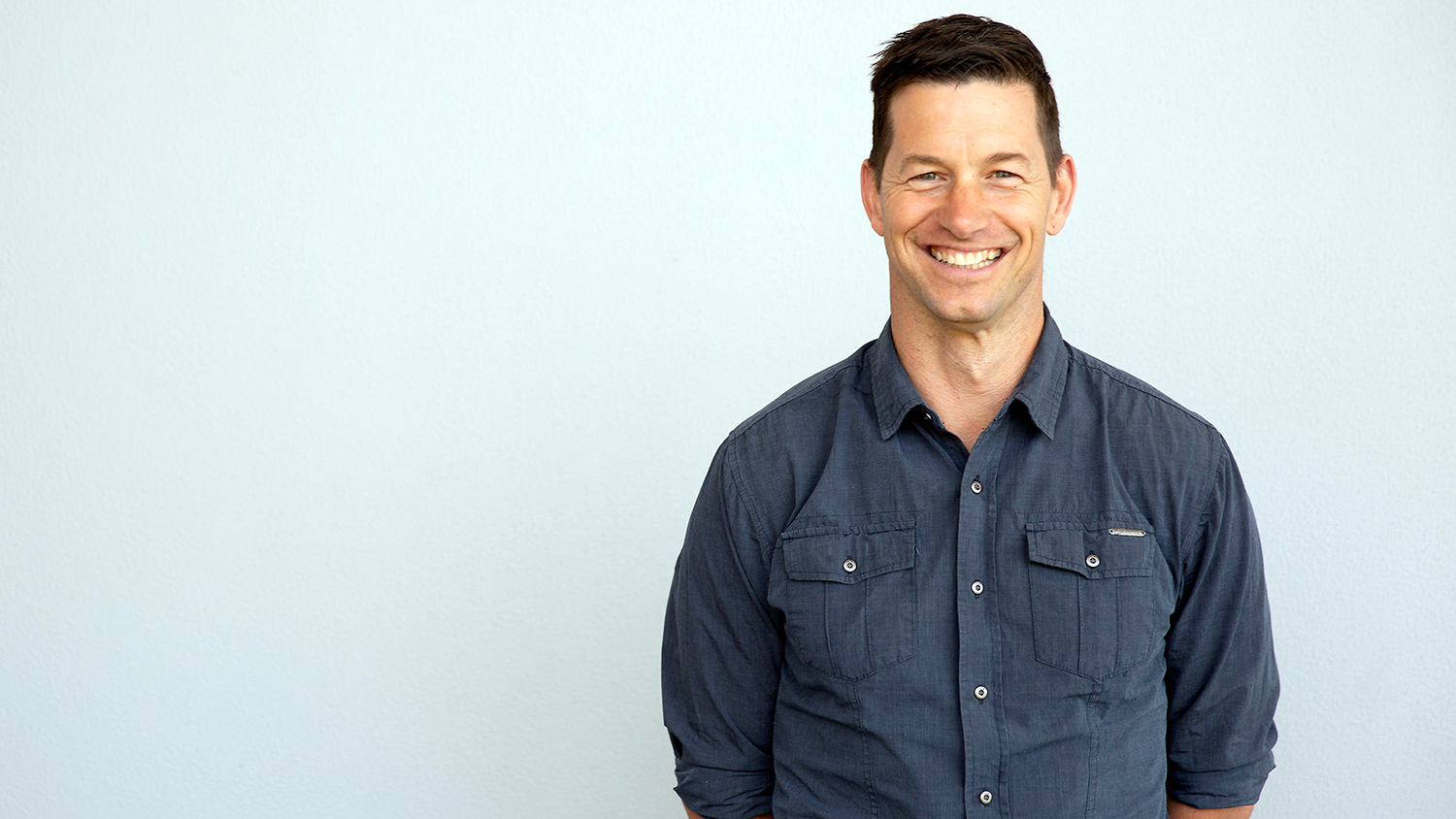Access keys for nzta.govt.nz
- h Home
- m Menu
- 0 Show list of access keys
- 2 Skip to content
- 3 Skip to top
Drop-off and pick-up times are getting calmer thanks to clear communication with families at a fast-growing school.

Taumata School students walk and wheel home from school.
Out the front of Taumata school in Tauranga, a drop-off lane wraps itself around the carpark with a raised pedestrian crossing halfway along leading into the school gates.
From the school's opening in 2019, the convenience of this set-up proved popular for families collecting children by car. Their numbers in turn lead to challenges around safety and congestion. Dealing with those challenges has taken deliberate leadership, agile decisions and clear communication.
“Our school is built for kids, not cars,” says Deputy Principal Mike Rankin.
“The school opened 2 ½ years ago and we started with 150 kids but with built space for 350 and this large carpark. We had this new roadway just for the school which was good. But once you have 150 parents dropping their kids off, it doesn’t matter how much road you have, it doesn’t handle it.
“Now there are 500 kids. There’s no way that our carpark and drop-off zone could handle that amount of people coming on site.”
The school serves newly settled families living in the The Lakes subdivision in Pyes Pa. Early on, many families began using the drop-off zone in the mornings and afternoons, often arriving early to get a spot. Rainy days were even busier.
“We did the usual thing of having teachers on duty pretending to be traffic wardens,” says Mike. “It didn’t work because there were no agreed expectation between the parents and the school about what they can do.”
Mike says the lightbulb moment came from the school’s involvement in Positive Behaviour for Learning. One aspect of this is clear agreed-upon expectations for student behaviour.
Mike says teachers walk the talk by having their own set of expectations and last year this was expanded to parents.
“We did a consultation with parents about agreed expectations for how they interact with the school. This covers many situations including the use of the drop-off zone.”
The consultation led to clear written expectations and the reasons for them, shared with parents via the school’s messaging system. For afternoons:
A map of “park and stride” locations is provided to suggest suitable places for older students to start and end their walk.

Taumata School Deputy Principal Mike Rankin.
Mike says there has been strong buy-in from families with a change in behaviour creating its own positive feedback loops.
“A lot of it is around perception of safety. As families see more kids walking rather than just one or two, they perceive it as a safer thing to do.”
This culture shift is supported by both the Tauranga City Council, and the school’s body of students themselves.
The school works in partnership with the council’s Travel Safe team on a range of road safety education and promotion initiatives through the year.
“For example, Feet First works well for our juniors because they want to get their key rings that say they have walked to school 100 times,” says Mike.
“Plus, we have days when students can bring their scooters to school for use at lunchtime and morning tea and you’ll see many of them scoot all the way from home on those days.”
He says the school speaks to students about the expectations for drop-off and pick-up.
“We talk to the students about all this at assemblies – because we realised the driving force is the kids – they don’t like their parents breaking the rules. The kids put pressure on the parents to do the right thing. When the kids drive this, it's more powerful.”
And walking at least part way to school, raincoat or brolly at hand on a rainy day, builds grit – one of Taumata School’s learning principles.